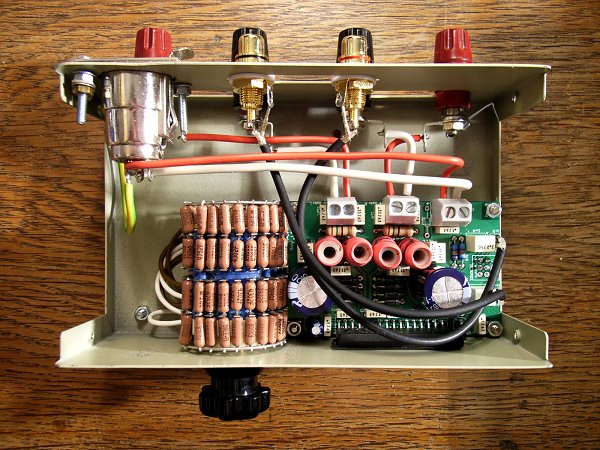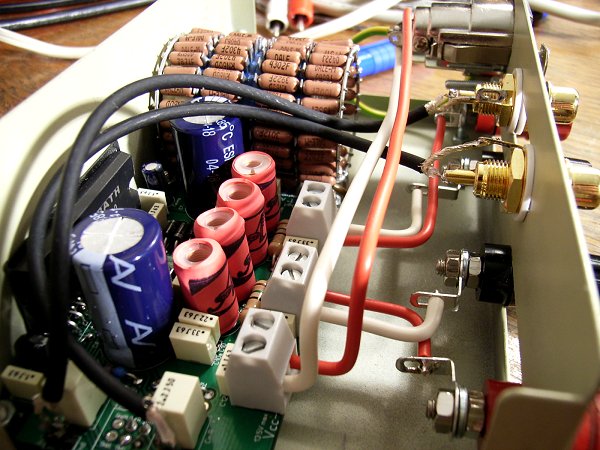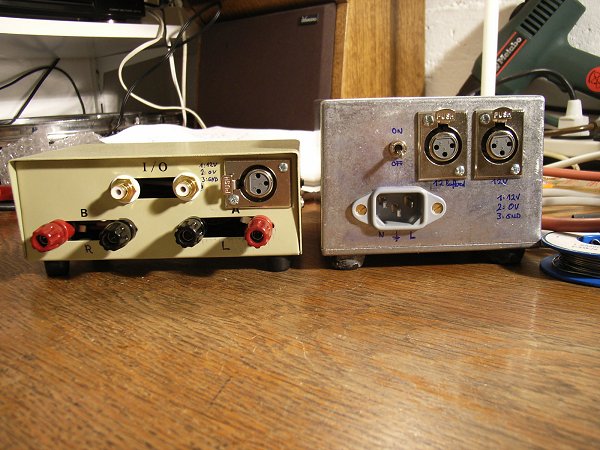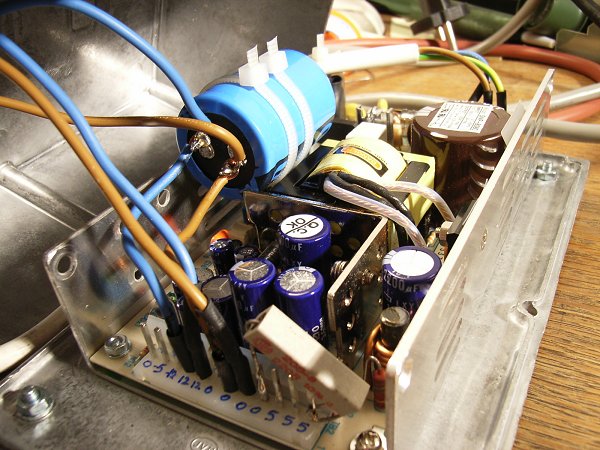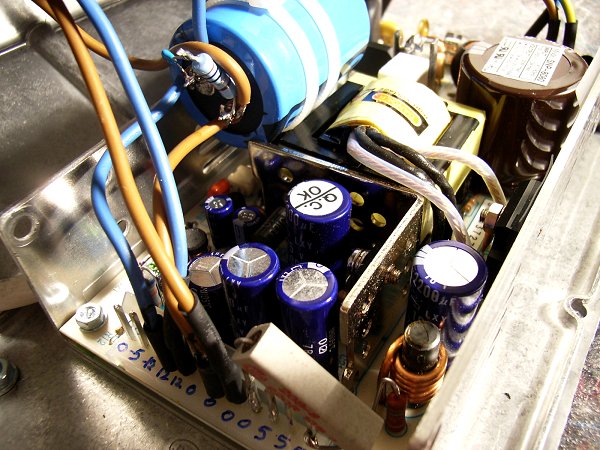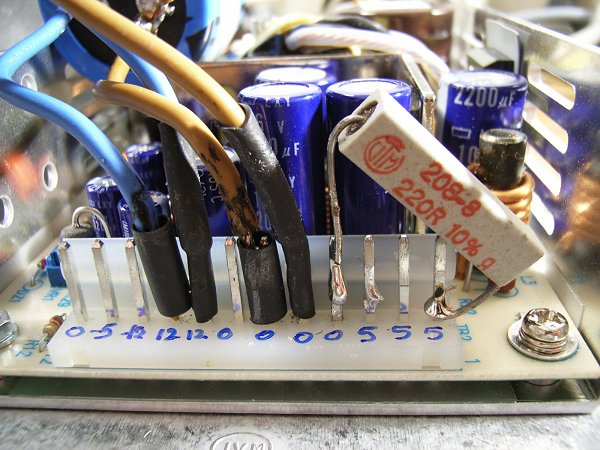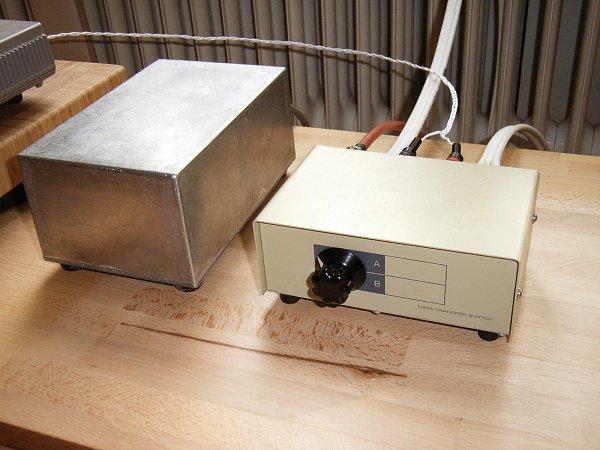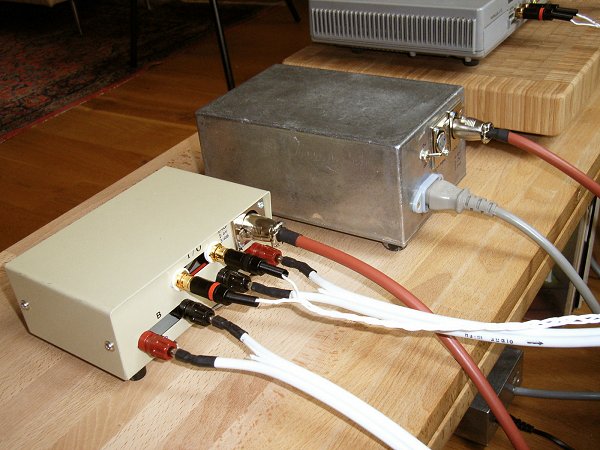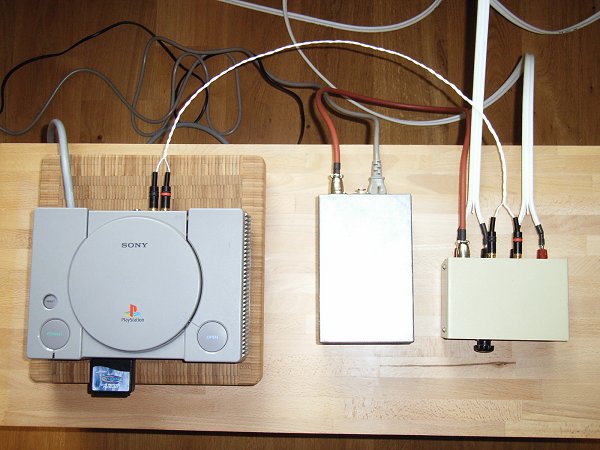I use an external PSU and was therefore able to put the amp board into a very small case. I used an old A/B printer switchbox which I have found in a scrapbox.
The amp module is seen on the lower right side. The board is mounted in the case in such a way that the chip touches the front panel (with an electrical insulation pad in between) in order to use the latter as a heatsink.
I do not use the Alps pot that comes with the kit. This pot is very good but the 24-position stepped attenuator seen in the picture is better.
